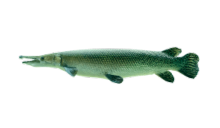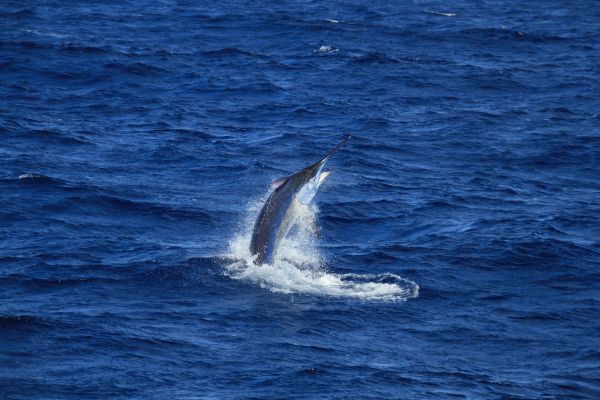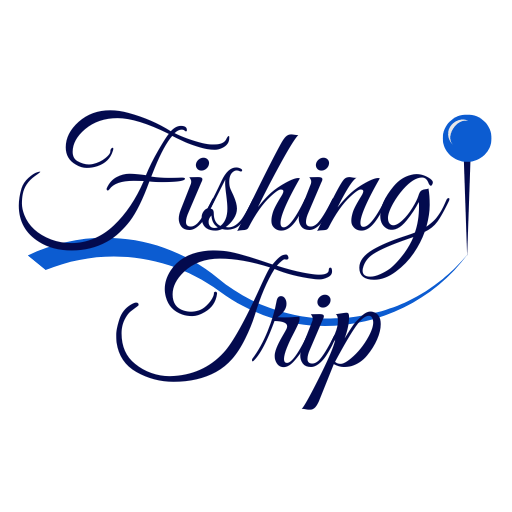The swim bladder of an alligator gar has a special air duct, which acts as an auxiliary respiratory organ. This allows them to breathe air at the water’s surface when oxygen levels are low, which often happens in shallow, warm waters. They are easily visible in clear water. The teeth of an alligator gar are extremely sharp, so landing and unhooking them must be done with utmost care. While their meat is edible, some gars have toxic eggs, and in the case of the longnose gar, even the broth can be poisonous. However, we always release these magnificent fish alive and healthy, so this isn’t a problem for us. Alligator gars are generally not fierce, long fighters; like pike, they rely on short bursts of strength and their weight.
The warmest months, typically July and August, are usually the best times to catch alligator gar. The hotter, the better, and it should rain as little as possible. A low river level also makes it easier to locate the fish. According to fishing guides in Costa Rica, gars can be caught year-round there. Similarly, in stocked Thai fishing ponds, alligator gar can be caught throughout the year. As mentioned in the descriptions of different species, alligator gars are usually found near aquatic plants in calm, often shallow water. Bays and large open areas between plants are most suitable. In rivers, anglers seek larger fish in deeper sections with less current, often in shaded areas. Local fishermen and shore residents can also help by pointing out spots where gars have been seen in the past. The fish can sometimes be visually located as they often breach the surface or jump. They are usually present in groups, but this doesn’t guarantee they will bite. Another fact is that gars are attracted to light reflections on the water, which can be advantageous in the evening.
Alligator Gar / Atractosteus spatula
For the sport fisherman hunting for a gar, the ultimate goal is likely the most impressive alligator gar. It is also called the shark of freshwater and is the largest among the gars.
Good catch reports in stories we received from the following locations:
Longnose Gar / Lepisosteus osseus
This species also counts as one of the giant fish.
Florida Gar / Lepisosteus platyrhincus
Spotted Gar / Lepisosteus oculatus
Shortnose Gar / Lepisosteus platostomus
Tropical Gar / Atractosteus tropicus
Cuban Gar / Atractosteus tristoechus
Gear: The choice of gear depends on whether you are using artificial or natural bait.
Rods:
Natural bait: For smaller gars up to one meter, a regular pike rod or a longer carp rod is sufficient. For larger gars between one and two meters, a heavier rod is better. Some experienced gar anglers prefer custom fiberglass rods due to their thicker, nearly unbreakable walls. However, I prefer modern carbon rods for their proven superiority and enjoyment during the fight. For ease of transport and maneuvering through dense brush along riverbanks, I opt for shorter rods. Casting far is rarely necessary. My choices include a Trema Boat Rod 1465 (2.70 m, casting 100-600 gr) and a Shimano Exage STC Boat 240 MH (casting 75-250 gr), though there are many other options, including modern catfish rods.
Artificial bait: Standard lure rods can be used, with the choice depending on the type and weight of the lure. Heavier fish require larger lures and heavier rods. Refer to “Fishing Techniques/Lures/Rods” for more information.
Reel: The drag system is the most crucial part of both spinning and baitcasting reels. My preference is still a high-quality spinning reel, such as the Shimano FA 6000, due to my experience and ease of casting. However, many anglers targeting trophy fish recommend baitcasting reels for their ability to handle extreme forces, greater line capacity, and superior drag systems. My Shimano reel holds 250 meters of 40/00 line and has never failed me, even with 80kg fish. Choose top-quality equipment as you don’t want to lose a dream fish due to inferior gear.
Line: Dyneema or braided line is ideal. Compared to nylon, Dyneema of the same breaking strength is much thinner. It floats well and can be made extra buoyant with line floatant, making it easier to use with a bobber. For bottom fishing, use the sinking version. Dyneema’s low stretch is beneficial for setting the hook. Its visibility is a downside, but this is offset by its thinner diameter. Regularly check for damage and replace the first few meters if needed.
Leader: Alligator gar have sharp teeth and powerful jaws, making a heavy steel leader necessary. A breaking strength of 50kg is not excessive. Secure the hook and loop with two sleeves on both sides, a method I trust 99%. For making leaders, see “Basic Techniques/Fishing Knots”. In some Thai fishing ponds, steel leaders are prohibited, so use a thicker fluorocarbon leader and strike at the first bite, though this reduces your hook-up rate.
Bobbers: The bobber must not damage the main line and should slide freely. Its size and buoyancy depend on the baitfish used. For small baitfish, a buoyancy between 30-80 grams is sufficient. Larger bobbers are rare locally, so you may need to modify a garfish bobber or make your own. A small balloon is handy, with buoyancy determined by the amount of air. A glow stick inside makes it visible at night. Inflate the balloon moderately to prevent it from bursting in the sun.
Hooks: Single hooks are more effective for penetrating the hard gar mouth than treble hooks and are easier to unhook, making them better for the fish. Good choices include Gamakatsu’s special catfish hooks, size 6/0 is a good standard.
Miscellaneous: Sliding weights for bobber fishing, bottom weights, high-quality swivels and snap swivels, long-nose pliers for unhooking, a cloth to cover the gar’s eyes to calm it after landing. Also, all usual fishing trip gear and spare materials, see the general checklist for fishing trips.
“The largest ever recorded alligator gar was a 327-pound (148 kg) behemoth that was captured in Mississippi in 2011, David said. But that individual was accidentally caught in a fishing net and so does not count as an IGFA record, he added.”
Source: LiveScience
The best bait is live baitfish caught on-site. This can be time-consuming, so it’s beneficial to find someone willing to catch baitfish for a small fee. Ideally, baitfish should be around 20 cm. The best baitfish are those most common in the area, resembling roach in appearance. Carp species live longer but are generally less preferred. If live bait is unavailable, use dead or frozen baitfish. Fish chunks or fillets are typically used for bottom fishing but can also be used with a bobber if they have some action.
Bites can be either gentle or forceful. Even small fish can strike with surprising power. Be patient and do not strike immediately. Wait until the fish takes line after the initial pause, then set the hook hard by pulling the rod back forcefully, repeating if possible. Not all bites result in a catch; some days, runs may stop after a few meters with only slight damage to the baitfish.
Smaller fish can be landed by hand or with a large net. For larger fish, use a sharp gaff, hooking the fish gently in the soft part of the lower jaw. Pull the fish into the boat and cover its head and eyes with a wet cloth to calm it. Always unhook with a long-nose pliers for safety.





